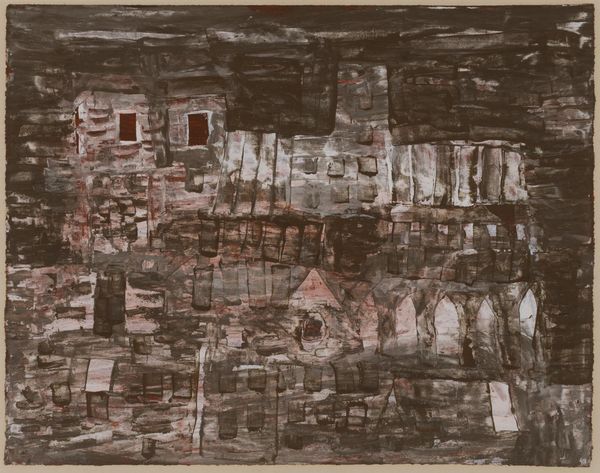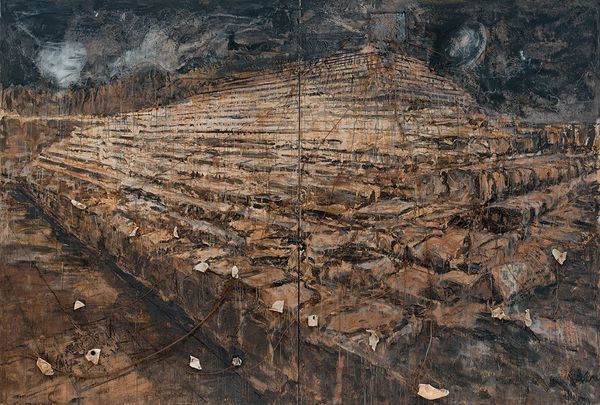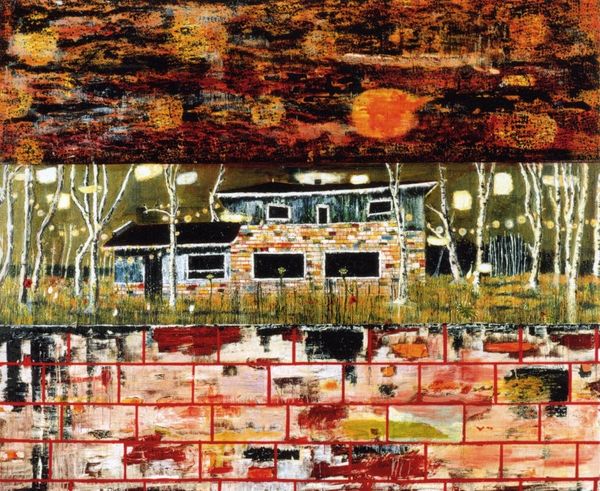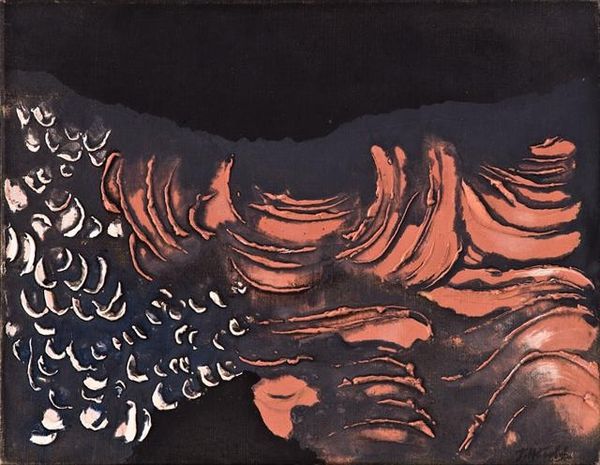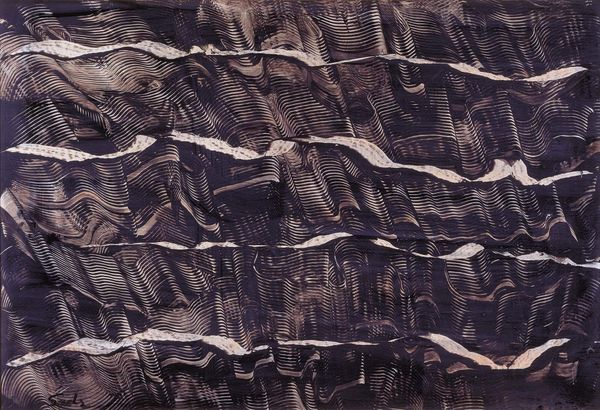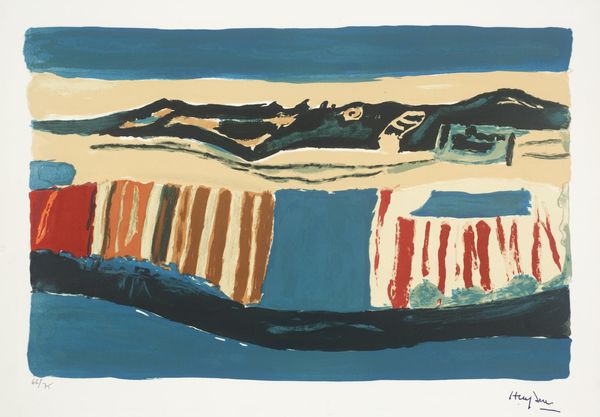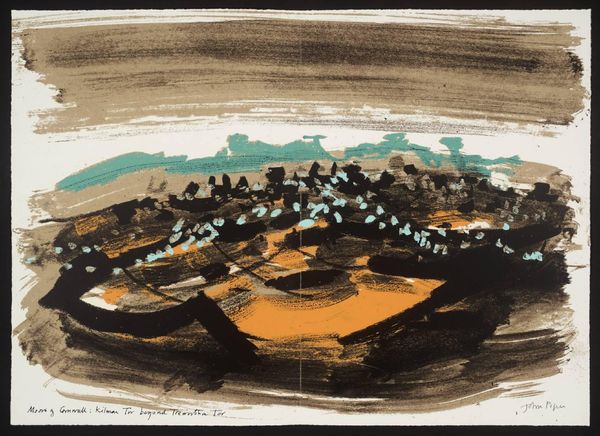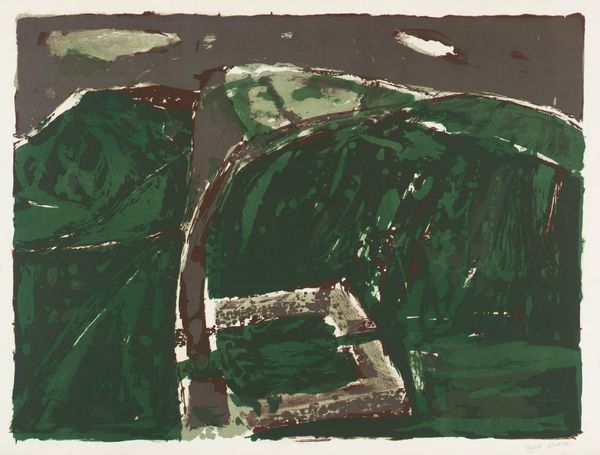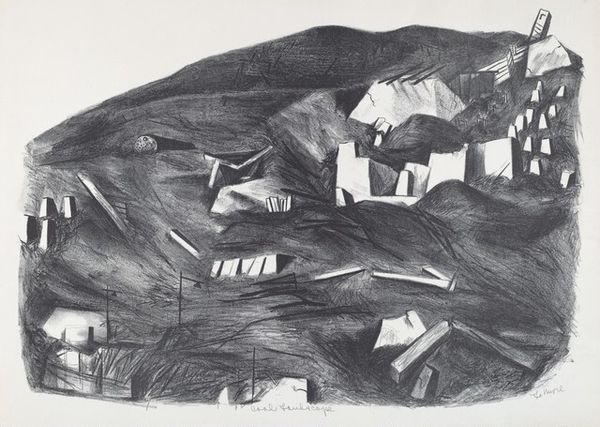
Dimensions: support: 502 x 613 mm frame: 696 x 798 x 47 mm
Copyright: © ADAGP, Paris and DACS, London 2014 | CC-BY-NC-ND 4.0 DEED, Photo: Tate
Curator: Max Ernst's "The Entire City," currently housed at the Tate Modern, presents a rather striking vision. Editor: Indeed. There's a strange foreboding quality, despite the seemingly ordered structure of the city itself. The layers and textures are quite intriguing. Curator: Ernst, who lived through two world wars, often used his art to critique societal structures. I wonder if this "entire city" is an observation on civilization's fragility. Editor: Or perhaps it's the pattern and repetition, a sort of visual echo, that points toward the inescapable cycles of history? The single moon in the sky—almost mocking. Curator: It’s interesting how art can simultaneously reflect and critique the worlds we build, both literally and figuratively. Editor: Precisely. It leaves you pondering whether we are building towards utopia or some self-made dystopia.
Comments
tatemodern about 1 month ago
⋮
http://www.tate.org.uk/art/artworks/ernst-the-entire-city-n05289
Join the conversation
Join millions of artists and users on Artera today and experience the ultimate creative platform.
tatemodern about 1 month ago
⋮
A crumbling city looms oppressively below the ring-shaped moon. Ernst made a whole series of such works. The imagery may reflect his pessimism as Nazism took hold in his native Germany. The ruined cityscape was created using a technique that Ernst called ‘grattage’ (scraping). It involved placing the canvas over planks of wood or other textured surfaces, then scraping paint across it. The shapes that emerged formed the basis of the image. Grattage was one of a number of techniques that Surrealist artists explored as a way of letting a chance element into their work. Gallery label, January 2022
